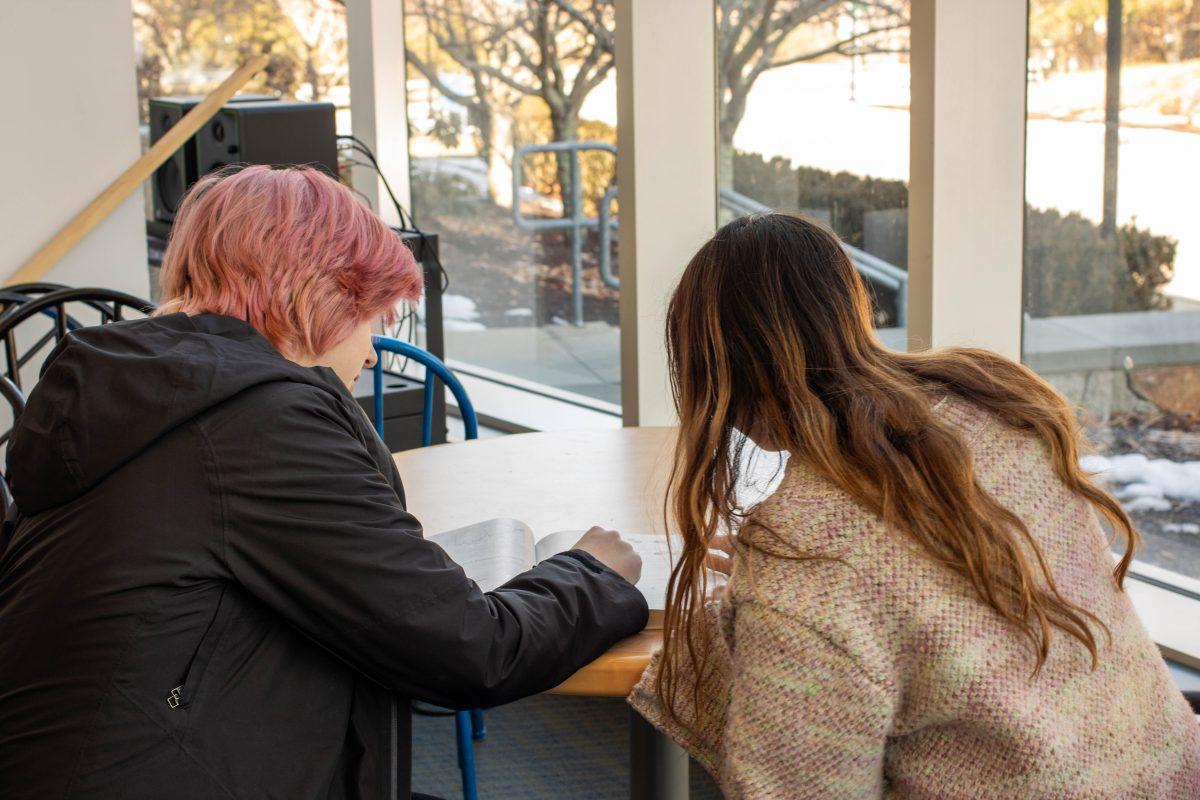
The thrill of a mid-class “Kahoot!” game is indescribable. At 9:00 a.m. on a Tuesday, any precedent regarding the strongest or most knowledgeable students in the class gets thrown out the window, and the individual with the greatest competitive edge is crowned victor. However, while some students thrive in highly competitive environments, there are often unnoticed negative impacts of these settings. “If they [don’t] see their name[…]on the leaderboard after a minute or two, and see that they’re way slower than their peers, they just shut down, which isn’t seen as much[…][students] doing nothing is not great,” Mathematics Faculty Jakob Hernandez said.
Even a simple class activity like Kahoot! highlights the detriments of an over-competitive educational institution. With the increasing selectivity of top colleges, students feel a growing pressure to differentiate themselves from and outperform their peers. This mentality has fostered toxic environments at many high schools in Massachusetts. “People wouldn’t share their study guides. They wouldn’t help each other out,” Rowan Calhoun (Class IV) said, regarding her experience at The Winsor School last year. With Nobles holding its students to such high standards, one would expect our student body to fall victim to more cutthroat attitudes. However, students and faculty express the contrary.
“I would say my classes here have been the least toxic of any school I’ve been at,” Hernandez said, having taught at several private high schools around the country. Director of College Counseling Kate Boyle Ramsdell says that the administration establishes a more unified culture by celebrating community feats as opposed to academic performance. “We’ve placed this idea of community and connection over individual accolades and achievements,” she said. This value system ended The Nobleman’s old tradition of publishing a list of where every senior was heading to college. “We did not want the last statement made about anybody in the senior class being ‘Here’s where they got in and where they’re going,’” she said.
In addition to core principles, small class sizes, and available student resources help create unity. During his freshman year at Andover High School, Derek Yin (Class III) faced difficulties meeting with his teachers but has found ample time to do so at Nobles this year. “There are more resources to go around. You’re not fighting for them with your peers, so I feel like that directly translates into less competition,” he said. These strong student-teacher bonds create a ripple effect that builds a unique culture at Nobles. “When the teachers are more supportive, the other students will be more supportive, but when the teachers are being very specific about who they give good grades to, it’s harder to support each other,” Calhoun said.
“There’s still your own desire to do well, but it’s not so much a life or death situation where you’re forced to either take the spot of your classmate or not go to the college you want.”
To a certain extent, Nobles’s extensive resources also let the school focus more on character in admitting applicants. Receiving a great number of qualified applicants, admissions can be more conscious about what kind of class they’re putting together. “[At] some schools I’ve been at, they [can’t], and it leads to some toxic environments,” Hernandez said. Because of the way the student body is constructed, students often see each other as dependable peers. “I feel like the type of person that goes to Nobles is a very supportive person,” Calhoun said.
Nobles’s impressive matriculation record also restrains feuding between its strongest students. “Nobles is definitely a little more sheltered in terms of how the college process works,” Emmett Chen (Class III) said. Chen claims that the increased certainty of college admission at Nobles allows students to explore more personal areas of interest, curbing the need to best their peers. “There’s still your own desire to do well, but it’s not so much a life or death situation where you’re forced to either take the spot of your classmate or not go to the college you want,” he said.
However, academic competition isn’t entirely avoidable. “No matter what, students do look at one another at times and [are] like: ‘All right, I’m competing against that person,’” English Faculty Mike Curran said. These tendencies were especially apparent during the COVID years, as Nobles classes became more and more divided. With the absence of assembly and minimal interaction across grades, there was a noticeable shift in student culture. “There was a growing individualism. I think it [was] a product of kids not being in community together all of the time. Kids were seeing each other more as competition,” Ramsdell said. This shift prompted a recovery process by the college office over the past couple of years, leading to the creation of Junior Day. Gathering as a class, juniors on this day collectively meet with various college deans, with the purpose of emphasizing that the college process is a community oriented ordeal. The event can’t eliminate the pressure to differentiate, but it has still helped establish a core identity for recent rising senior classes.
“No matter what, students do look at one another at times and [are] like: ‘All right, I’m competing against that person.’”
Despite the slump of the COVID era, Nobles continues to exist as a place where camaraderie is paramount to tangible accomplishments. “We consider our relationships to be much more important, and that fosters a sense of community in a way that’s not the case in some other schools,” Assistant Director of Diversity, Equity, and Inclusion Aneesa Sen said. It is through this idea that students can forgo ruthless competition and really care for each other. The Nobles student’s inner psychopath may slip out every now and then for a Kahoot! match, but the race to the podium could not be more different than the race to an Ivy.
